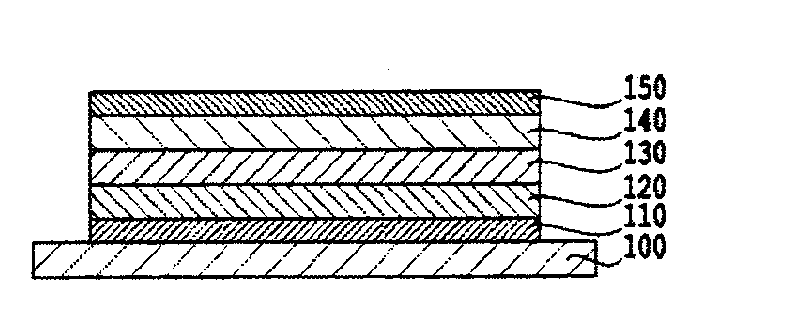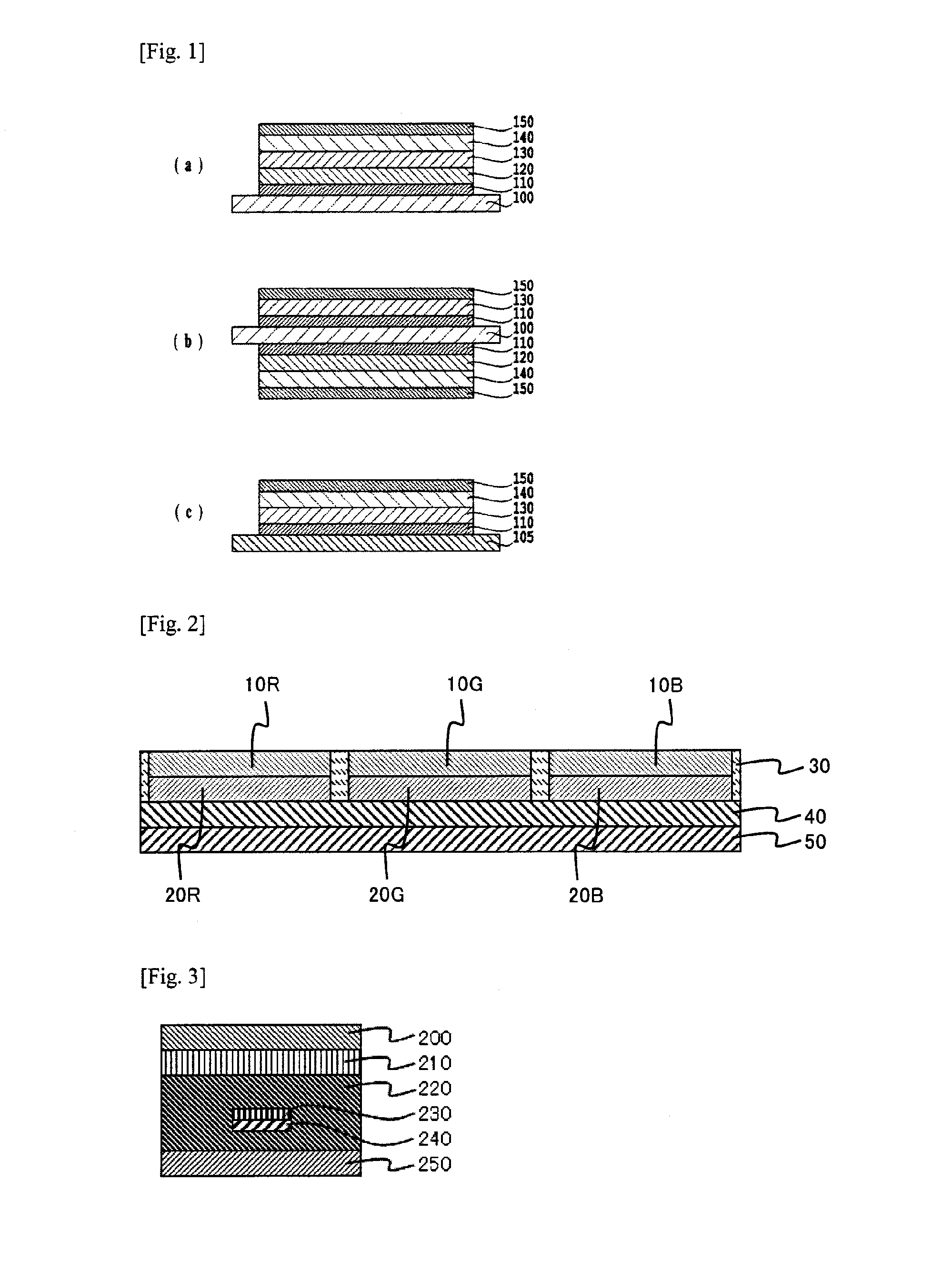Schiff base type compound and coloring material containing the same
a base type compound and color material technology, applied in the field of new colors, can solve the problems that the colorants disclosed in the literature are not quite sufficient in terms of various performance requirements, and achieve the effects of high color purity, high brightness, and high color conversion efficiency
- Summary
- Abstract
- Description
- Claims
- Application Information
AI Technical Summary
Benefits of technology
Problems solved by technology
Method used
Image
Examples
examples
[0104]The present invention will now be illustrated in greater detail with reference to Preparation Examples, Examples, and Evaluation Examples, but it should be understood that the invention is not construed as being limited thereto.
preparation examples 1-1 to 1-12
Preparation of Compound Nos. 1 Through 9, 11, 55, and 56
[0105]In a reaction flask, 0.01 mol of each of the starting compounds shown in Table 1 or 2 and numbered 1 through 9, 11, 55, and 56 and 0.012 mol of diisopropylethylamine were dissolved in 12 g of dichloromethane. To the solution was added dropwise 0.012 mol of BF3 / Et2O under cooling in a water bath over a period of 10 minutes, and the mixture was stirred for the reaction time shown in Table 1 or 2. Twenty milliliters of water was added, and the stirring was continued for an additional 1 hour period. After oil-water separation, the oily phase was dried over Na2SO4, filtered, and concentrated. The residue was purified by column chromatography using chloroform as a developing solvent, and the column eluate was concentrated and dried in vacuo at 60° C. for 1 hour to give a Schiff base type compound (compound No. 1 through 9, 11, 55, or 56, respectively) of the invention having the appearance shown in Table 1 or 2 in the yield sho...
examples 1-1 to 1-12
and Comparative Examples 1-1 to 1-3
[0106]Fluorescence spectra of Schiff base type compound Nos. 1 to 9, 11, 55, and 56 obtained in Preparation Examples 1-1 to 1-12 and comparative compounds 1 to 3 shown [Chem. 10] below were determined in a toluene solvent using a spectrophotometer U-3010 (for absorption spectrometry) and a fluorescence spectrophotometer F4500 (for fluorescence spectrometry), both from Hitachi High-Technologies Corp. The results of fluorescence spectrophotometry are shown in Table 5.
TABLE 5FluorescenceSchiff BaseλmaxεMaximumFluorescenceDensityCompound(nm)(M−1cm−1)(nm)Intensity(M)ExampleCompound3658.60 × 103465.424.23.72 × 10−51-1No. 1ExampleCompound3955.17 × 104446.443.87.21 × 10−61-2No. 2ExampleCompound4213.88 × 104557.821.21.14 × 10−51-3No. 3ExampleCompound3758.11 × 103478.276.66.08 × 10−51-4No. 4ExampleCompound4065.60 × 104451.6283.36.59 × 10−61-5No. 5ExampleCompound4055.52 × 104451.4402.86.56 × 10−61-6No. 6ExampleCompound4466.87 × 104526.2202.75.58 × 10−61-7No. ...
PUM
| Property | Measurement | Unit |
|---|---|---|
| visible light transmittance | aaaaa | aaaaa |
| visible light transmittance | aaaaa | aaaaa |
| haze | aaaaa | aaaaa |
Abstract
Description
Claims
Application Information
 Login to View More
Login to View More - R&D
- Intellectual Property
- Life Sciences
- Materials
- Tech Scout
- Unparalleled Data Quality
- Higher Quality Content
- 60% Fewer Hallucinations
Browse by: Latest US Patents, China's latest patents, Technical Efficacy Thesaurus, Application Domain, Technology Topic, Popular Technical Reports.
© 2025 PatSnap. All rights reserved.Legal|Privacy policy|Modern Slavery Act Transparency Statement|Sitemap|About US| Contact US: help@patsnap.com



